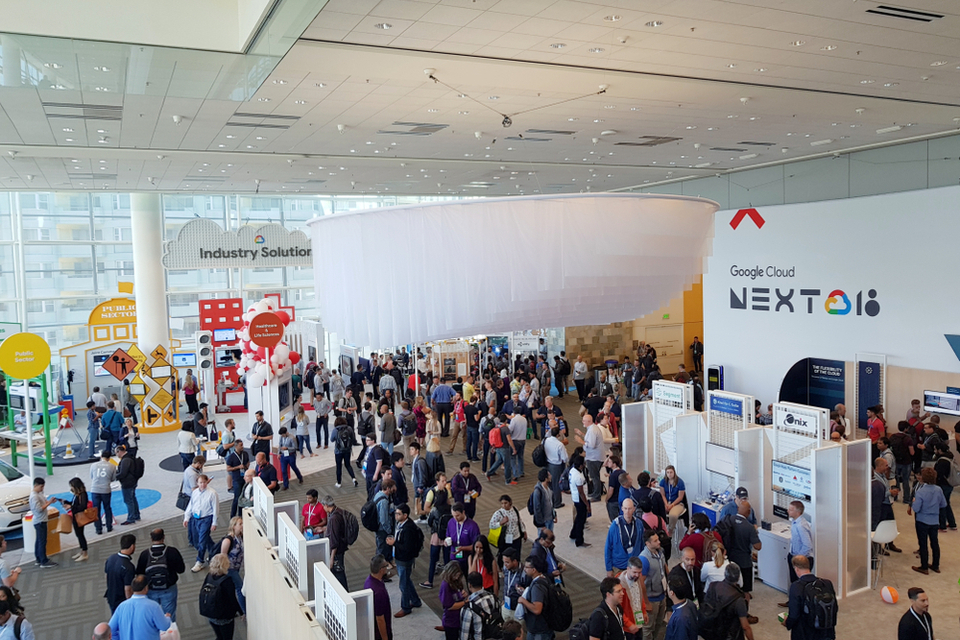Edgy Labs Covers new Releases and Announcements for Google Ads, Analytics and DoubleClick from the Google Marketing Next 2017 Keynote Presentation.
Sridhar Ramaswamy and his fellow Google speakers presented the culmination of 20 years of search data filtered down into useful marketing tools. Using information on consumer trends combined with advances in machine learning, Google Marketing Next 2017 portrays the future of marketing, and we’ve brought the key points straight to you.
Google Marketing Next 2017:
The Impact of Assistive Technology
Mobile has changed how we learn, live, and interact. According to Google’s new data, 87% of all search users turn to mobile devices to get things done in critical micro-moments.
In addition, 20% of all users have shifted from using text-based searches to voice commands.
Google reports 20% of mobile users have switched to voice commands.Click To TweetNot surprisingly, data and machine learning are increasingly applied to the devices we use in an effort to increase the quality of our experiences with assistive technologies.
How Does This Relate to Marketing?
“As our experiences with our devices become easier and better – there will soon be no limit to the ‘moments’ people seek assistance across any device they’re on. And as a result, brands will have more opportunities than ever before to offer value in people’s daily lives well beyond the moment of actual product usage,” says Sridhar Ramaswamy, Google Senior VP of Ads and Commerce.
However, as Ramaswamy later points out, although “research shows that being helpful has a positive impact on purchase and recommendation…less than ⅓ of brand experiences are described as helpful by consumers”.
To predict and anticipate user needs we need to not only accumulate a lot of data and focus on machine learning – there are “three new important realities for a business,” says Ramaswamy.
- All consumer interactions must be smarter with data – interactions should be not just driven by people but where they are in their path to purchase : Each ad should reflect consumer “intent, context, identity,” says Ramaswamy.
- Consumers want access with 1 step or 1 second: New Google study of 900,000 consumers in 100 countries found that 50% of customers backtrack between the first 1 to 7 seconds – this means that for every second of delay on mobile site conversion rates fall by up to 20%. In other words, SPEED = REVENUE.
- “Non-Line Assistance”: Consumers don’t really distinguish between online and offline worlds anymore. In fact, consumers are interacting with brands in a digital context much more than a physical one. For example, in 2015 70% of store purchases a result of smartphone-provided information.
NEW LAUNCH LATER THIS YEAR: Store sales measurement tools will allow merchants to import transaction data into Adwords to measure growth, monitor campaigns, etc.
Merchants will also be able to communicate with Google’s third party affiliates (60-70% of all debit/credit card companies) without installing extra software in a secure, privacy-safe, setting.
NEW LAUNCH COMING SOON: Location extensions and Store visits for YouTube campaigns. Since over 50% of users look for videos associated with a brand before visiting a store, YouTube videos associated with brands are to offer store location lists, directions, business hours & more.
NEW LAUNCH: AMP landing pages beta (Google Display Network) will use info from Google cache to load content nearly instantaneously and AMP ads to load up to 5 seconds faster.
Google Marketing Next 2017:
Improving Audience Relationships
Google reports 91% of smartphone users purchased or plan to purchase something after seeing a relevant ad. Bhanu Narasimhan (director of Audience Products) reminds advertisers that “relevant” ads speak to customer’s intent, interests, and activities they share.
Narasimhan also reports that Google will be using its data in conjunction with machine to machine learning tools in order to provide merchants with:
- Better audiences by connecting Google with devices in real time and by interconnecting data across google – YouTube, Paystore, Search, and more.
- Brand-new audience segments by connecting brands (on YouTube and others) with specific consumer patterns and life events that are unique to specific cultures and countries (ex: how to train a dog, wedding tips, planning a quinceanera, boda flamenca, etc…).
NEW LAUNCH LATER THIS YEAR: Consumer Patterns & Life Events will be added to Gmail Ads.
- Broader reach with audiences across channels/devices:
Now offering in-market audiences for search ads (e.g: consumers with multiple related searches, like eco-friendly car / 2017 best car / new car – will want to watch videos/do research before buying but are “in-market” for a particular product).
Bhanu Narasimhan reports that those advertisers that have used the beta version of these features have experienced a 10% average increase in conversion rates.
Google Marketing Next 2017:
Moving Away From Last-Click Attribution
As Google’s Bill Kee (Group Product Manager of Attribution) attested: Existing attribution tools are difficult to set up, can’t track across multiple platforms simultaneously for individual customers, and are not well integrated. In addition, many marketers are forced to track attribution with “last-click” solution that does not take into account the cumulative ad exposure of most customers.
NEW LAUNCH: Google Attribution follows customers across multiple channels and multiple devices. Attribution works by using existing data from AdWords, Google Analytics, and DoubleClick to create a single view of customer’s path to purchase. Attribution will be available to all advertisers for no cost.
NEW LAUNCH: Enterprise Attribution 360 is designed for the largest brands with the most data and those already using DoubleClick Campaign Manager.
Both versions of Attribution help brands understand why each ad point toward purchase is important, brings together all data associated between customers and brand (social media, affiliate, organic search, etc), and provides an easy, dynamic, interface.
Since, as Kee remarks, 30% of people use 5 or more devices the data-driven attribution of Google Attribution works to give credit to all the ads that motivate purchases, increase conversion rates, and lower overall costs.
NEW LAUNCH: Unique Reach Reporting for Adwords and DoubleClick will expose
repetitive ad placement for single users and help brands – as Kee states – “Stay in budget and stop annoying people.”
Check out Edgy's complete coverage of Google Marketing Next 2017.Click To TweetPreventing and Reducing Bounce Rates
Karen Yao (Group Product Manager of Advertiser Platforms) announced that the new features coming later this year to Adwords will result in a 30% faster layout for mobile users.
This will be vital, Yao says, because currently there is a “40% higher bounce rate for users on mobile than on desktop”.
Other Adwords updates are to include new campaign features include template goals, in market audiences, and new audiences to reach. In addition, Campaign Audience display will now show all audiences (Search, video, display, and shopping) in a side-by-side format and will allow users to build custom audiences. Moreover, Adwords Landing Page reports will now also monitor speed/bounce rates.
Google Optimize and Adwords are also set to integrate, says Yao, so that brands will be able to design and test landing pages without the help of webmasters or coding knowledge.
Smarter Media Campaign Planning
As Roshan Khan (Senior Product Manager of DoubleClick and Product Manager of Programmatic) notes, current media campaign planning is done through formal workflows/ “tribal” knowledge.
NEW LAUNCH: Planning in DoubleClick Bid Manager now offers overviews on objectives and campaign planning tools, can create optimized media plans based on previous similar successful campaigns, and will be able to provide estimated impression volumes and costs for each.
NEW LAUNCH: Google Surveys 360 to connect with Adwords to assess audience who has seen your ads and build a powerful remarketing list.
Assistive Shopping Experiences
Jennifer Liu (Director of Google Shopping) discussed the expansion of Google Assistant across all new G devices (GHome, iphone, android, etc). Liu also stressed the importance of conversational technology and machine learning for back and forth communication at individual scale in the right moment – so connections feel natural and personal.
NEW FEATURE: Local shopping feature with Google Assistant devices.
Full Speaker List in Order of Appearance at Google Marketing Next 2017:
Sridhar Ramaswamy: Senior VP of Ads and Commerce
Bhanu Narasimhan: Director of Audience Products
Bill Kee: Group Product Manager of Attribution
Karen Yao: Group Product Manager of Advertiser Platforms
Roshan Khan: Senior Product Manager of DoubleClick & Product Manager of Programmatic
Jennifer Liu: Director of Google Shopping



















Comments (0)
Least Recent